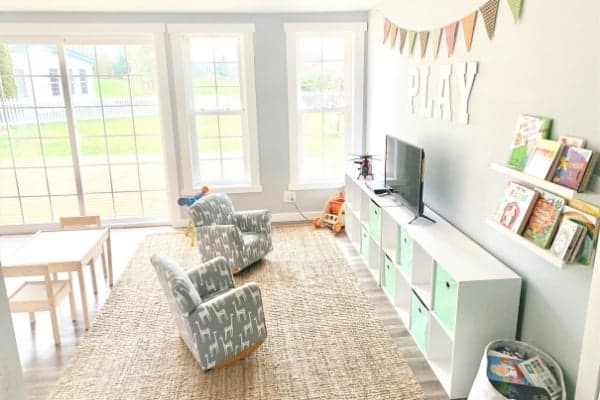The foundation and frame of your house are what keep it standing strong and safe for you and your family. In Pittsburgh, PA, the changing seasons and their impact on our homes can bring to light the hidden signs that something might not be right beneath the surface. The city’s blend of hot summers and cold, snowy winters can put a lot of stress on any building, making it all the more important to stay alert to the health of your home’s structure.
Knowing what to look out for can save you time, money, and a whole lot of trouble down the road. Whether it’s a door that won’t close properly anymore or a crack in the wall you can’t remember seeing before, these could be hints that your home is trying to tell you something important. In this blog, we will explore the key signs that suggest your home might need some structural repairs, guiding you through each indicator with clear examples and advice on how to address them.
Cracks in the Foundation
Not all cracks are created equal. The ground beneath our homes can freeze, thaw, and shift and small cracks in the foundation can quickly become gateways to significant structural issues. Monitoring these cracks for changes in width or length can help homeowners identify when to call in experts for a closer look.
Uneven or Sloping Floors
A telltale sign that your home’s foundation may be in distress is the presence of uneven or sloping floors. While charming in old homes, these can indicate deeper problems. In areas where soil conditions can vary widely, it’s crucial to understand the implications of these imperfections.
Issues with Roof Integrity
Pittsburgh’s weather can be tough on roofs, from heavy snowfalls to wind-driven rain. A compromised roof can lead to water damage, mold, and structural issues within the home. If you notice missing shingles, leaks, or daylight peeking through attic spaces, it’s time to consider professional roof installation services. Don’t try to DIY it because roofing projects require specific skills, tools, and knowledge about local building codes that most homeowners don’t possess. Professional roofers bring expertise and equipment to handle the job safely and efficiently, ensuring the work is up to code and can withstand local challenging weather conditions.
Doors and Windows That Stick
Doors and windows that no longer fit their frames snugly can be more than just an annoyance; they can signal a shift in your home’s structure. Especially in Pittsburgh, with its varied climate, wooden frames can expand and contract, but persistent sticking should be investigated for underlying structural shifts. Adding weatherstripping or adjusting hinges may provide temporary relief, but it’s important to address the root cause. Look out for any unusual gaps or warping in the frames, and consider consulting a professional for a comprehensive assessment.
Gaps Between Walls and Ceilings
Gaps where walls meet ceilings or floors may seem minor, but they can indicate significant shifting within the structure of your home. These gaps can expand over time, especially in regions where the seasonal temperature swings can stress your home’s frame. To address these gaps, consider using flexible caulk or sealant designed for expansion joints. Keep an eye on any changes in the size or shape of these gaps, as they can indicate ongoing structural movement.
Visible Water Damage
When you spot water stains on ceilings or walls, it’s a clear warning that your home may have hidden leaks or moisture issues. Water seeping into structural elements can weaken them over time, risking more serious damage. Homeowners need to repair not just the damage they can see but also find and fix where the moisture is coming from. Regular inspections can help catch these issues early, preventing long-term structural problems. A professional evaluation is often necessary to fully understand the extent of the damage and the best course of action.
Deteriorating Support Structures
Support structures like beams and columns are the backbone of your home’s stability. Over time, environmental factors can cause these critical components to deteriorate. Signs of wear, such as visible sagging or rot, indicate that these elements are no longer providing the necessary support. Early detection and repair of these issues are vital to maintaining your home’s structural integrity. Consulting with a structural engineer can provide insights into the severity of the damage and the necessary repairs. Ignoring these signs can lead to more severe, costly problems down the line.
Chimney Cracks or Leaning
A chimney that’s cracking or leaning significantly is more than an aesthetic concern; it’s a potential structural hazard. This issue often points to foundational shifts or weakening, which can have broader implications for your home’s overall stability. In regions where the ground can freeze and thaw, these problems may be exacerbated. Addressing chimney issues promptly can prevent more extensive damage to your home. Regular chimney inspections are a critical part of home maintenance. If you notice any signs of distress, it’s important to call in experts who can assess and repair the damage safely and effectively.
Pest Infestations
Pests such as termites and carpenter ants pose a serious threat to the wooden structures within your home. These invaders can silently compromise the strength and safety of your home’s framework. Regular pest inspections are essential for early detection and treatment. If you suspect an infestation, prompt action is necessary to prevent further damage. Professional pest control services can assess the situation and recommend the best treatment options.
Excessive Moisture in the Basement
Basements are particularly prone to moisture problems. Excessive moisture damages the foundation and can lead to mold growth, which poses health risks. It’s important to address any signs of dampness or water accumulation immediately. Solutions may include improving drainage around the house, waterproofing the basement, or installing a sump pump. Ignoring moisture issues can lead to more significant structural damage over time. Regular checks, especially after heavy rains, can help identify potential problems early.
Conclusion
Addressing structural issues in your home promptly can prevent minor problems from evolving into major repairs, especially in areas where the climate can exacerbate existing vulnerabilities. Regular inspections and maintenance are indispensable for identifying signs of damage early and taking corrective action. Whether it’s water damage, deteriorating support structures, chimney issues, pest infestations, basement moisture, or unsettling noises, each sign is an opportunity to safeguard your home’s structural integrity. By staying vigilant and responding quickly to these warning signs, you can protect your home, your safety, and your investment. A proactive approach to home maintenance ensures that your dwelling remains a secure and stable environment for you and your loved ones.





